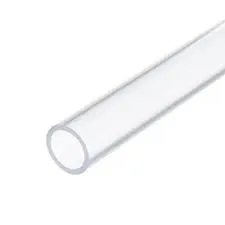Лис . 09, 2024 11:36 Back to list
Exploring the Benefits and Applications of PVC Conduit Pipe in Electrical Installations
Understanding PVC Conduit Pipe A Comprehensive Guide
PVC (Polyvinyl Chloride) conduit pipes have become a staple in electrical installations, providing essential protection for wiring and ensuring a safe and efficient electrical system. This guide delves into the properties, applications, advantages, and installation practices associated with PVC conduit pipes.
What is PVC Conduit Pipe?
PVC conduit pipes are made from polyvinyl chloride, a versatile plastic known for its durability, resistance to corrosion, and lightweight characteristics. These pipes are designed to encase electrical wiring, safeguarding it from environmental factors such as moisture, chemicals, and physical damage. They come in various diameters and lengths, allowing for customized installations based on specific project needs.
Properties of PVC Conduit Pipe
One of the primary reasons for the widespread use of PVC conduit pipes is their exceptional properties
1. Durability PVC is resistant to corrosion and decay, making it suitable for both indoor and outdoor applications. Whether exposed to sunlight, rain, or chemicals, PVC conduit can withstand harsh conditions without deteriorating.
2. Lightweight Compared to metal conduits, PVC is significantly lighter, which simplifies transportation and handling during installation. This characteristic also reduces the load on structural supports, making it a more attractive option for many projects.
3. Non-Conductive As a non-metallic material, PVC conduits do not conduct electricity. This property enhances safety by minimizing the risks associated with electrical shocks, making PVC conduit an excellent choice for electrical installations.
4. Ease of Installation PVC conduits can be easily cut, shaped, and joined together using solvent cement. Their flexibility allows for various configurations to fit unique design requirements without the need for specialized tools.
Applications of PVC Conduit Pipe
PVC conduit pipes are employed in various applications, primarily in electrical and telecommunications industries. Some common uses include
- Residential Wiring Homeowners often use PVC conduits to protect electrical wiring from potential damages in walls and ceilings, ensuring a safe electrical distribution system throughout the house.
- Commercial Buildings In commercial settings, PVC conduits are used for wiring in offices, schools, and retail spaces, where safety and organization of electrical systems are paramount.
- Underground Installations The resistance of PVC to moisture makes it suitable for underground applications, such as providing protection for electrical lines buried below the surface.
pvc conduit pipe

- Telecommunications PVC conduits are utilized to route telecommunications cables, providing protection from external elements while ensuring signal integrity
.Advantages of PVC Conduit Pipe
Choosing PVC conduit pipes for electrical installations offers several benefits
1. Cost-Effectiveness PVC conduits are generally more affordable than metal alternatives. Their long lifespan and low maintenance requirements lead to even greater savings over time.
2. Chemical Resistance PVC’s resistance to various chemicals ensures that it remains intact and functional, even in environments where exposure to caustic substances is possible.
3. Low Fire Risk PVC is inherently resistant to ignition compared to other materials, reducing fire hazards in electrical installations.
Installation Practices
Proper installation of PVC conduit pipes is crucial for ensuring the longevity and efficacy of the electrical system. Here are some best practices
1. Plan the Layout Before installation, plan the conduit layout carefully. Consider the location of junction boxes, switches, and outlets to minimize bends and ensure a straight run wherever possible.
2. Cutting and Joining Use a fine-tooth saw or a PVC cutting tool to obtain clean cuts. When joining, apply a uniform layer of solvent cement to both surfaces and hold them in place for a few seconds to ensure a secure bond.
3. Support and Spacing Support the conduit every 10 feet for horizontal runs and every 3 feet for vertical runs to prevent sagging and damage.
4. Seal Openings Use appropriate fittings and covers to seal any openings, protecting the internal wiring from dust, moisture, and pests.
Conclusion
PVC conduit pipes present a reliable solution for protecting electrical wiring across various applications. Their durability, ease of installation, and cost-effectiveness make them a preferred choice for both residential and commercial projects. By understanding their properties and following proper installation practices, users can ensure a safe and long-lasting electrical system. As electrical demands continue to grow in modern society, the role of PVC conduit pipes will only become more critical in creating efficient and safe electrical installations.
-
Durable HDPE Sheet | Versatile & Impact-Resistant Plastic
NewsAug.13,2025
-
Premium PVC Soft Sheets: Clear, Flexible & Durable
NewsAug.12,2025
-
Premium PVC Round Rods: Durable, Chemical Resistant, Easy to Machine
NewsAug.11,2025
-
PP U-channel: Chemical-Resistant, Lightweight & Durable
NewsAug.10,2025
-
Transparent PVC Pipe: Clear Flexible Tubing for Fluids
NewsAug.09,2025
-
Durable PP Rigid Sheet: Versatile & High-Quality Plastic Panels
NewsAug.08,2025

